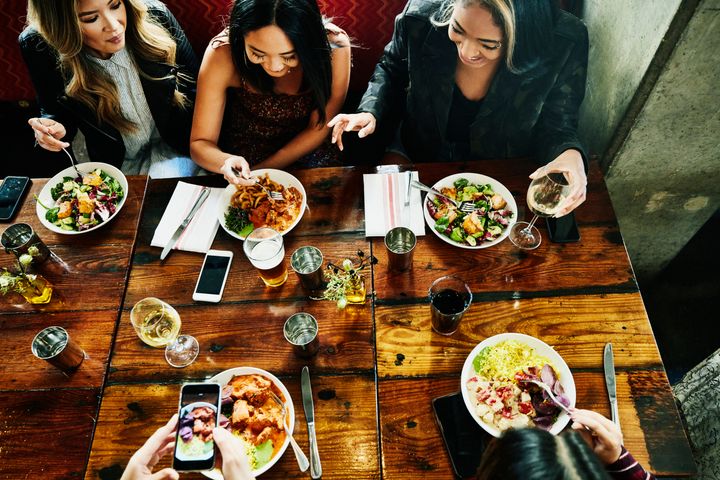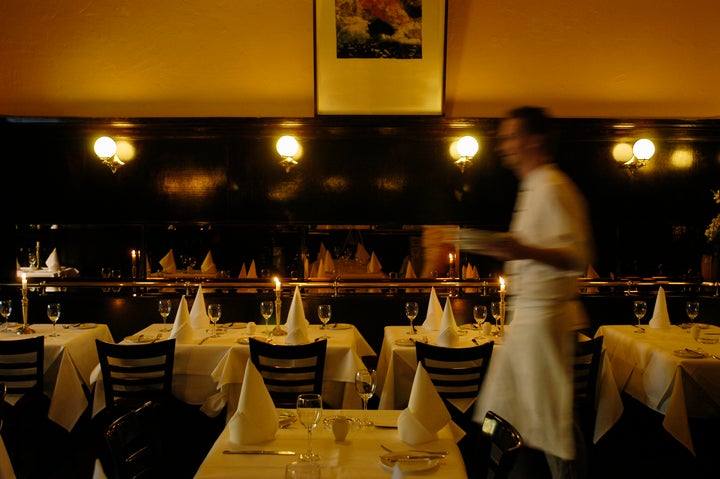
Nothing quite ruins a nice night out like a meal where you have to shout to talk to your dinner mate. And as it turns out, there’s scientific proof that loud noises aren’t just drowning out your conversations — they may also be influencing your meal choices.
“There’s not a very high level of awareness and education about what comprises a dangerous sound environment,” said Gregory Scott, founder of SoundPrint, a smartphone application that allows users to measure and track decibel levels (dBA) in public places. Dealing with hearing loss, Scott created the app after his own frustration of not being able to have conversations with people in public spaces.
People have “never been exposed to sound level guidelines or they misunderstand them,” Scott noted. While he is not a health professional or researcher, SoundPrint data provides a snapshot of U.S. restaurants and other public spaces, including cafes and movie theatres.
From the data collected in 2023, SoundPrint found that 63% of restaurants were too loud for conversation. SoundPrint categorises the sound levels of public spaces in four categories: quiet (under 70 dBA), moderate (71-75 dBA), loud (76-80 dBA) and very loud (over 81 dBA), which means that a majority of restaurants tested with the app were categorised as loud or very loud.
Loud noise can have a deleterious impact on people’s hearing. The National Council on Aging reports 70 dB is the threshold for healthy sounds; below 70 dB is safe, over 70 dB can be harmful. 60 dB is a normal conversation and 120 dB is an emergency vehicle or saw mill.
Researchers point to recent changes in restaurant architecture, where sound-softening curtains and fabrics are replaced with bare wood and walls that amplify sound.
These loud restaurants and public spaces may cause long-term hearing loss for both customers and restaurant staff. But that’s not all.
The sound has an impact on how you eat.
Researchers over the past few decades have been studying the impact of sound — everything from music type, loudness and tempo — on food. “What we hear has a much bigger impact on our eating and drinking behaviour than any of us realise,” said Dr. Charles Spence, head of the Crossmodal Research Laboratory at Oxford University and pioneer of the field of gastrophysics, a growing area of interdisciplinary research that looks at physics and chemistry of food and cooking. “In some sense, [we are] being manipulated without our awareness,” Spence said.
Studies have suggested that people tend to drink more in louder environments than less noisy ones. People drink more in a shorter period of time and increase table turnover, both of which can increase profits overall. That can have an impact on people’s health since people may consume more than they need. Similar studies with rats have shown comparable results.
“If it’s very loud, it’s almost the opposite of mindful eating,” explained Dr. Qian Janice Wang, associate professor of consumer psychology at the University of Copenhagen. The louder music may distract people from how full they are feeling and cause them to consume more than they need or intended to consume. Overeating may be a way of dealing with the awkwardness of not being able to talk to your companion, Wang explained.

Another possibility is that the louder noise may result in shorter decision-making and may result in folks choosing unhealthier options, explained Dr. Anna Brytek-Matera, professor of medical and health sciences at the University of Wroclaw, Poland.
And it can actually impact your sense of taste, too.
But that’s only one part of the sound and food story. Further research has suggested that people may experience tastes differently based on the pitch of the sound. Spence noted the experiment where people try dark chocolate while listening to both high- and low-pitched music. With the higher pitches, people experienced the chocolate as sweeter; with lower pitches, the chocolate tasted more bitter.
Findings like this could potentially influence people’s health; they could perceive something is sweeter with a high-pitched sound without having higher sugar content. Spence called the impact of sound on food taste “sonic seasoning.”
That’s only a tip of the proverbial iceberg (lettuce). Other studies have shown other ways sound changes our perception of food, such as loud noises enhancing umami while decreasing other tastes, or that the type of music can impact the enjoyment of wine. Brytek-Matera also cited a study where people who listen to nature sounds were more likely to choose healthier foods over unhealthy ones.
But sound may not be the only factor. One’s mood may also impact taste perception as well as individual preferences. Some people want noisier environments; Scott noted that some people used the SoundPrint app to find places that were noisy. Other senses besides taste and sound can also influence the meal, from the colour of the plating, the feel of the food, as well as the smell.
But there’s also room for more research in the field, such as looking at individual preferences, cultural and national differences. Brytek-Matera noted that there are some contradictions between studies that require further investigation as well.
Some restaurants use “sonic branding.”
While some people may not realise the influence of sound has on food, some chefs are paying attention. High-end restaurants have been integrating soundscapes with their food for a while now. For instance, William Salim’s Milan-based restaurant Sensorium has a tasting menu with a soundscape synchronised for the entire meal with music ranging from Icelandic rock, opera, nature noises and more.
Heston Blumenthal’s Fat Duck restaurant in the U.K. served a dish called “The Sound of the Sea” where patrons were served a seafood dish along with a conch shell containing an iPod and headphones that play the sounds of the sea.
Some high-end restaurants have gone the other extreme and are not playing any music, letting the food speak for itself.
You can still enjoy your next night out.
What can customers do to have a better night out? Consider using apps like SoundPrint to find quieter places or feel empowered to say something to management, who may not even know there is an issue, Scott said. He noted that the percentage of restaurants that were too loud did drop during the pandemic, from 67% in 2019 to 63% in 2023, but that’s still a majority of restaurants tracked on the app.
Other options include going to restaurants during off-peak hours or asking for a table that’s shielded from the noise, Spence suggested. Wang recommended figuring out what you want beforehand and/or setting a limit in terms of beverages consumed, which is probably a good strategy regardless of the sound environment.
But it’s also OK to enjoy some level of noise. People’s expectations about an eating facility are also important. “If it’s a fine dining restaurant, there’s probably expectations around what you’re going to hear in terms,” Steven Keller, sonic strategy director at SiriusXM, said. “If it’s a bar environment, you have the expectation that you’re going to hear louder conversations. That’s part of the ambience that you actually like, and that’s OK too.”
But like everything related to food, the old saying goes — everything in moderation. Sound, too.